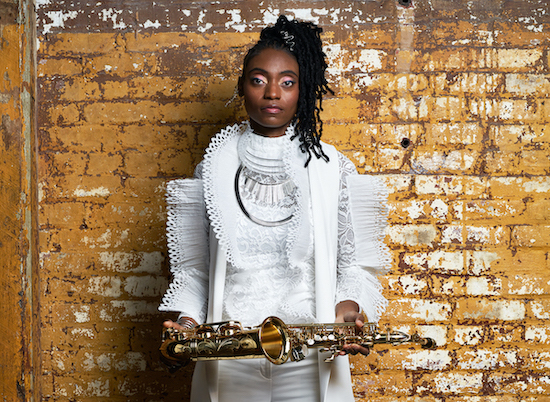Jun 3, 2025 11:25 AM
In Memoriam: Al Foster, 1943–2025
Al Foster, a drummer regarded for his fluency across the bebop, post-bop and funk/fusion lineages of jazz, died May 28…

Lakecia Benjamin is among 25 artists DownBeat predicts will help shape the future of jazz.
(Photo: Elizabeth Leitzell)Lakecia Benjamin’s approach to jazz is influenced by the belief that Black music of all genres has a shared lineage.
The bandleader said she first picked up a saxophone at the age of 11, but “it wasn’t until I got to high school that I started getting into jazz.” She grew up in a primarily Dominican section of Manhattan, initially playing “a lot of merengue and salsa music,” but also was exposed to soul artists like James Brown and Sly Stone.
“By the time I got to college, I was kind of wide open to the sound of things. I wasn’t thinking, ‘This instrument sounds this way,’” she said. “I was thinking more like, ‘How does the music make me feel?’”
That perspective is reflected in the range of artists Benjamin has collaborated with: A mentee of Gary Bartz, she has toured with Gregory Porter and Alicia Keys, and has shared stages with hip-hop icons Pete Rock and Missy Elliott.
Benjamin’s boundless sensibility also is showcased on a handful of leader dates: While the 2012 release Retox was imbued with the energy of vintage funk and soul, her 2018 album, Rise Up, was inflected with a refreshing hip-hop sensibility.
Her 2020 album, Pursuance: The Coltranes (Ropeadope), is a rarity, a record simultaneously paying tribute to Alice and John Coltrane. Given her musical pedigree, though, it makes perfect sense for Benjamin’s first recorded homage to be conceptually inventive, yet rooted in heritage.
“I felt incomplete just honoring one person even though, of course, John Coltrane’s music is amazing,” said Benjamin, who helmed a 2018 tribute to the saxophonist at Jazz at Lincoln Center for the Monday Nights with WBGO series.
Since releasing Pursuance, Benjamin topped the category Rising Star–Alto Saxophone in the DownBeat Critics Poll and was named Up and Coming Musician of the Year at the Jazz Journalists Association Awards.
After the success of her latest album, which featured jazz heavyweights like Regina Carter, Ron Carter and Reggie Workman (who also served as co-producer), Benjamin said she wants to continue drawing from the well of music history, to honor “these legends while they’re here, using their guidance to keep moving forward, because I think that’s a big part of the tradition.” But she also reflected on those who no longer are here.
“The whole time I was recording [Pursuance], I was imagining that [Alice and John] were sitting in front of me, watching the session. [I asked myself,] would they be pleased with my behavior in the studio, every note I played, how I’m talking, how I’m arranging?” DB
This story originally was published in the November 2020 issue of DownBeat. Subscribe here.

Foster was truly a drummer to the stars, including Miles Davis, Sonny Rollins and Joe Henderson.
Jun 3, 2025 11:25 AM
Al Foster, a drummer regarded for his fluency across the bebop, post-bop and funk/fusion lineages of jazz, died May 28…

“Branford’s playing has steadily improved,” says younger brother Wynton Marsalis. “He’s just gotten more and more serious.”
May 20, 2025 11:58 AM
Branford Marsalis was on the road again. Coffee cup in hand, the saxophonist — sporting a gray hoodie and a look of…

“What did I want more of when I was this age?” Sasha Berliner asks when she’s in her teaching mode.
May 13, 2025 12:39 PM
Part of the jazz vibraphone conversation since her late teens, Sasha Berliner has long come across as a fully formed…

Roscoe Mitchell will receive a Lifetime Achievement award at this year’s Vision Festival.
May 27, 2025 6:21 PM
Arts for Art has announced the full lineup for the 2025 Vision Festival, which will run June 2–7 at Roulette…

Benny Benack III and his quartet took the Midwest Jazz Collective’s route for a test run this spring.
Jun 3, 2025 10:31 AM
The time and labor required to tour is, for many musicians, daunting at best and prohibitive at worst. It’s hardly…